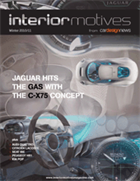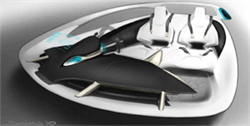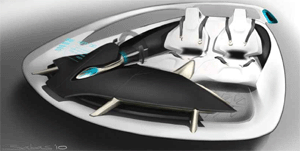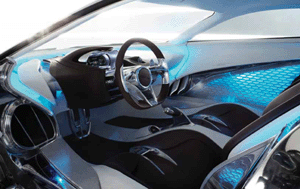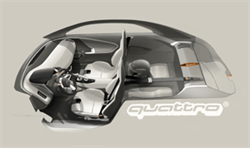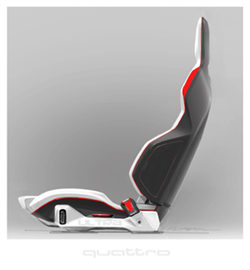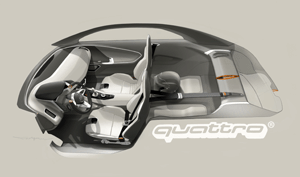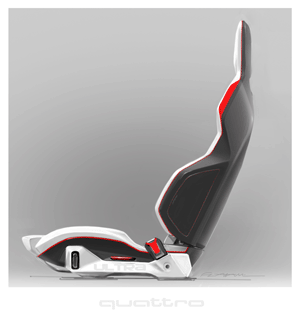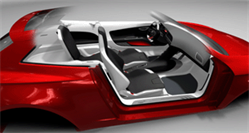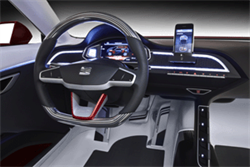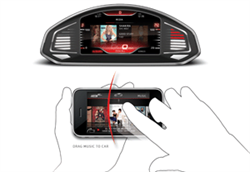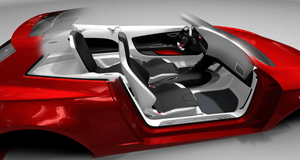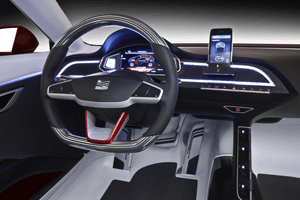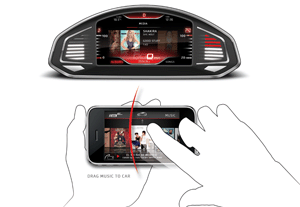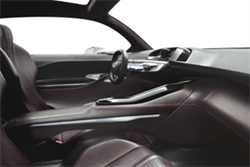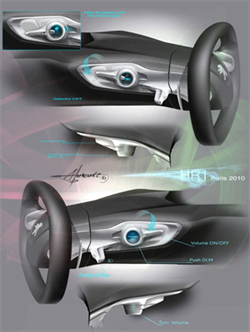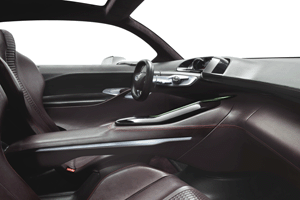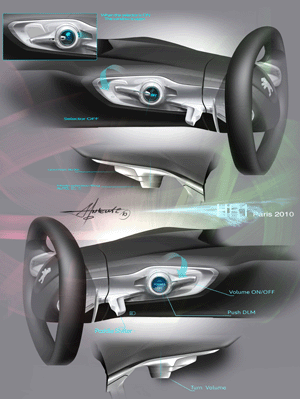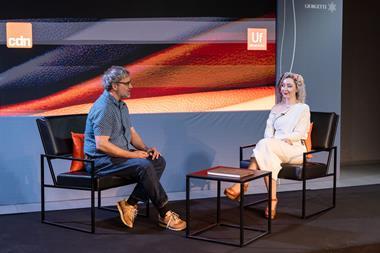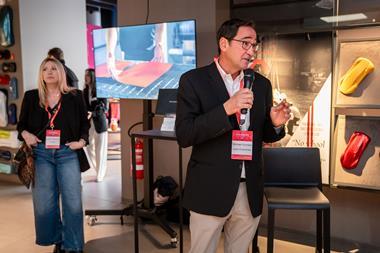IN THIS ISSUE
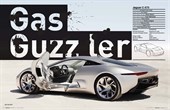
The rear window of the C-X75 acts as showcase for the mid-mounted, twin micro gas turbines that combine with the four electric motors to power the concept. Blue backlighting helps to provide a psychological link between the powertrain and the rest of the cabin.
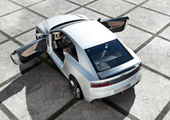 Vehicle type: concept/2-seat coupe
Vehicle type: concept/2-seat coupeHead of Audi Group Design: Wolfgang Egger
Interior Design Director: Carsten Monnerjan
Lead interior designer: Florian Flatau
Colour & Trim Director: Simona Falcinella
Project started: June 2010
Project completed: September 2010
Launch: Paris/September 2010
There is no plastic inside the quattro concept – even the door panels are crafted from carbon-fi bre. The design of the seats, like the rest of the interior, focussed on minimising weight. “An Italian competitor has chairs that are 18 kilos, so we thought it would be fun to try and match or beat that,” says Monnerjan. The seats are
made by Sparco and weigh a shade over 18kg each.
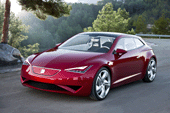 Vehicle type: concept/2+2-seat coupe
Vehicle type: concept/2+2-seat coupeDesign Director: Luc Donckerwolke
Interior Project Leader: Marc Franch Ventura
Workshop Interior Design Chief: Paco Siguenza
Interior designers:Michele Conti &
Carlos Bartolomé
Interface designer: Ruben Rodriguez
C & T Project Leader: Annabell Herbst
Project started: March 2010
Project completed: September 2010
Launch: Paris/September 2010
“The whole car started – interior and exterior – with an icon in mind, and that was the iPhone,” says Donckerwolke. As a self-confessed gadget and Apple fan, he expresses frustration at the constant need to learn and switch between different operating systems: “Why does he (the consumer) want to adapt to something else? The driver comes into the car with his iPhone, and we get rid of all the other stuff and build the interface between the car and the phone.” As illustrated in this sketch by interface designer Ruben Rodriguez (right middle), an unoffi cial iPhone app allows the driver to select music or information on their mobile phone and send it with a fl ick of a fi nger to the main vehicle display. The device can also be connected directly to the HMI through a docking station that slides out of the centre of the dashboard (right bottom).
 Vehicle type: concept/2+2 seat crossover
Vehicle type: concept/2+2 seat crossoverDesign Director: Gilles Vidal
Interior Design Director: Amko Leenarts
Colour & Trim Designer: Hélène Veilleux
Interior designer: Frédéric Antecki
Project started: January 2010
Project completed: July 2010
Launch: Paris/October 2010
Magazine
